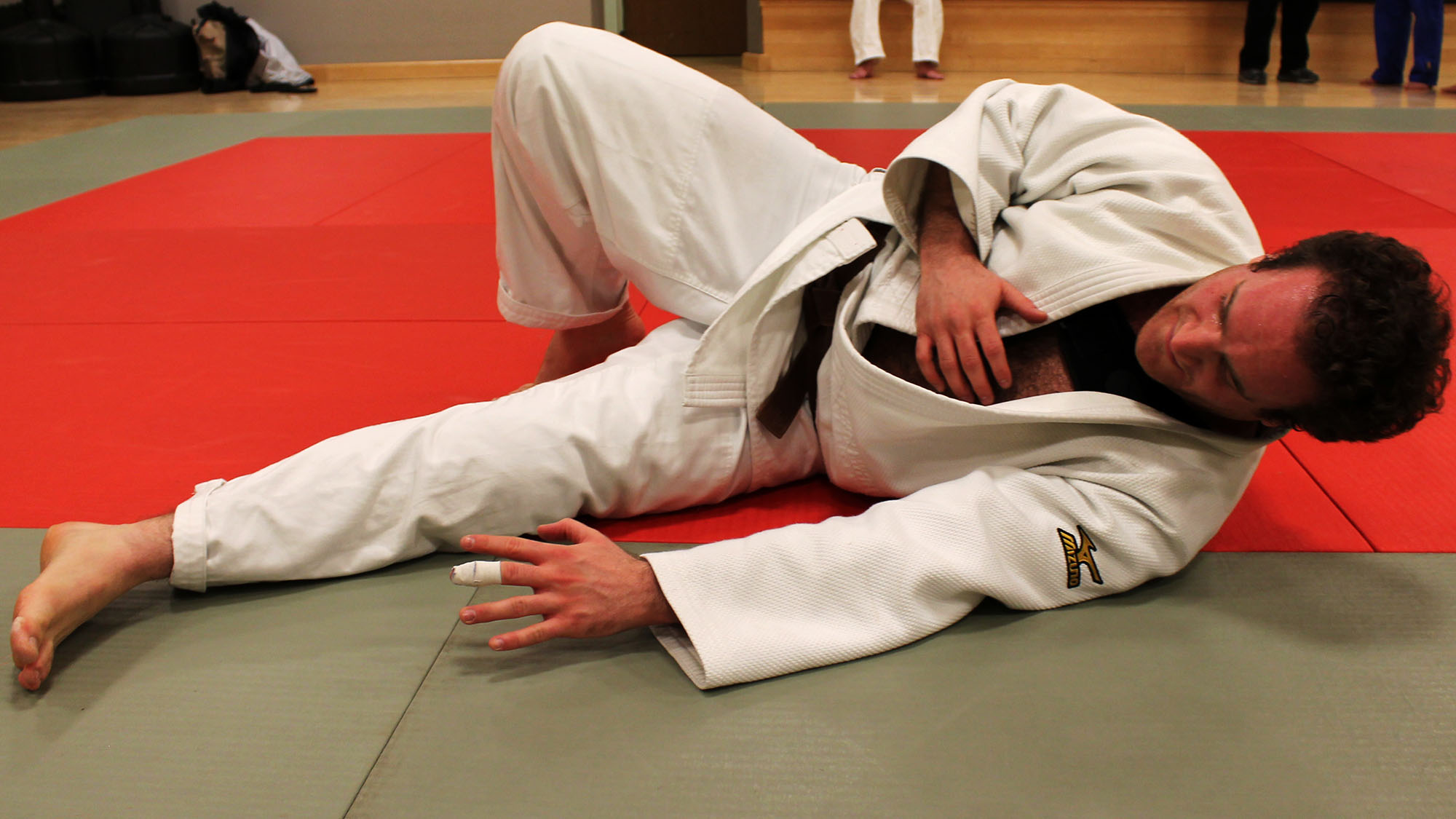ICE
How to fall on ice: lessons from judo
Tuck chin, loosen limbs to break a fall, judo practitioner advises

caption
Aonghus Garrison practices falling during a judo session at the University of King's College.Daniel Webber has tips for tipping over.
“A nice fall looks very smooth,” says Webber, former president of the Dalhousie Judo Club. “You don’t want to stiffen up when you fall … I believe it is a rag doll effect.”
As Nova Scotians slip on icy sidewalks, they can learn judo techniques that prevent head, back and wrist injuries. In judo, practitioners not only learn how to throw each other but also how to fall safely.
Related stories
If you keep your body loose, Webber says, you can spread the force of the fall across a larger surface area. The priority is to protect the head, which you can do if you tuck your chin and bend your knees to minimize the distance of the fall.
“It’s not realistic to tell everybody, ‘Hey, it’s winter time. Wear a helmet every time you walk to the store,’” Webber says.
If you fall backward, he says, curve your back and let yourself roll backward like a rocking chair. If you fall forward, land on your forearms rather than your wrists.
Webber usually practices these techniques on mats, but he has also used them on ice. As an adult learning to skate, he took lessons at the Emera Oval. He recalls the instructors’ reactions when he hit the ice: “They complimented me on my falling ability, (saying), ‘That was a very nice and elegant fall.'”
To prevent falling in the first place, Webber suggests pedestrians slide their feet along the sidewalk instead of lifting their heels with each step.
“People from the east coast understand it,” he says. “I call it the east coast shuffle.”

